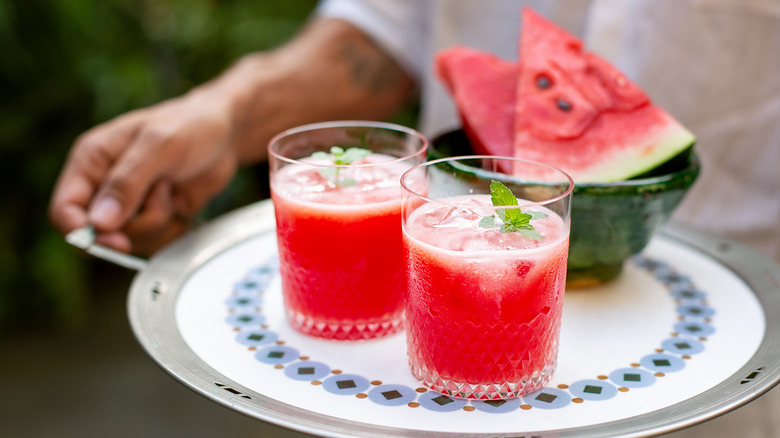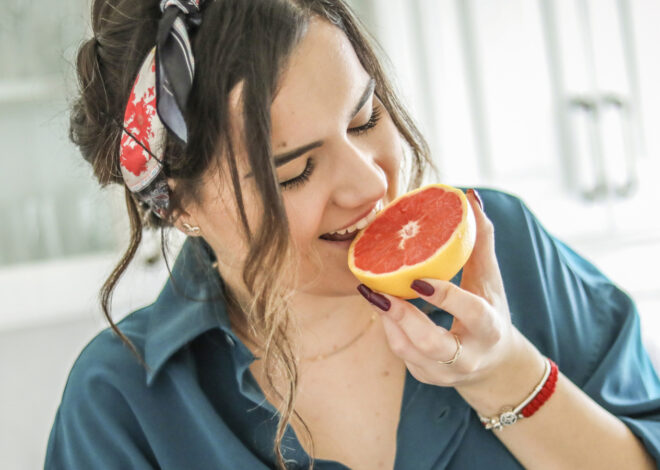
Tomato Juice Can Help Prevent Cancer But You May Want To Avoid It If You Have One Specific Condition – Health Digest
Tomato juice often gets overshadowed by its role in a Bloody Mary, but it offers unique health benefits even without the vodka and Worcestershire sauce. Tomato juice contains many of the same nutrients as orange juice but with 71 fewer calories and 15 fewer grams of sugar per cup. Tomato juice is also higher in potassium and vitamin C than orange juice.
One powerful antioxidant found in tomato juice is lycopene — about 22 milligrams per cup. According to a 2022 review in Nutrients, lycopene may help reduce cancer risk by minimizing the harmful effects of oxidative stress, which can damage DNA and lead to cancer. Lycopene also inhibits blood supply to tumors, prevents their spread, and promotes the death of tumor cells.
Although there are many benefits to drinking tomato juice every day, people with gastroesophageal reflux disease (GERD) may need to avoid it. Tomato juice, along with sauces and pastes, is high in acid and can trigger GERD symptoms. If you have GERD but still want the cancer-fighting power of lycopene, there are other foods to consider.
Foods high in lycopene
Tomatoes are among the best sources of lycopene, but they also have a pH of 4.5, according to the Tampa Bay Reflux Center. Tomato products like tomato juice can have an even lower pH, which may cause that familiar burning sensation in your chest. One food that’s especially high in lycopene and low in calories is watermelon. Although watermelon doesn’t have as much vitamin C as tomatoes, a cup provides about 7 milligrams of lycopene. If you prefer juice, watermelon juice offers around 10 milligrams of this cancer-fighting antioxidant per cup (and may speed up muscle recovery).
Papaya is another good option, with a pH of 5.6 (per Holland and Barrett). A cup of papaya is lower in sugar than watermelon and delivers nearly a full day’s worth of vitamin C. While it doesn’t match tomatoes or tomato juice in lycopene content, papaya still provides about 2.6 milligrams per cup.
If you’re open to venturing beyond fruits and vegetables, minestrone and Manhattan clam chowder can also be good sources of lycopene, providing 14 and 12 milligrams per serving, respectively. While their lycopene content comes from tomatoes, the Tampa Bay Reflux Center recommends adding a pinch of baking soda to these soups to help neutralize some of the acidity.
Other foods to avoid if you have GERD
Unfortunately, some foods high in lycopene are also on the list of GERD triggers, such as grapefruit. In fact, many citrus fruits may need to be avoided if you have GERD. Lemons are often the most problematic, followed by limes and oranges. Other potentially GERD-irritating fruits include plums, pomegranates, raspberries, and pineapples. Gentler options to consider for your stomach are mangoes, coconut, and bananas.
Fruits aren’t the only foods that can aggravate GERD. Your favorite morning latte may give you an energy boost, but it can also trigger GERD symptoms. It’s not just coffee, but any caffeinated drinks, such as energy drinks, kombucha, and some teas, may also be culprits. And yes, chocolate can aggravate GERD as well. You might also need to avoid soda, even if it’s caffeine-free. Carbonated beverages can cause acid reflux, and drinks with added sugar or artificial sweeteners may trigger symptoms. Alcoholic beverages can also irritate the stomach and esophagus.
(Know the difference between acid reflux and heartburn.)
Some people may also find that garlic, onions, fennel, or certain spices can provoke GERD symptoms. Even mint, often thought to soothe digestion, can worsen heartburn. Unhealthy foods, particularly ultra-processed items and those high in saturated or trans fats, may also make GERD worse.





